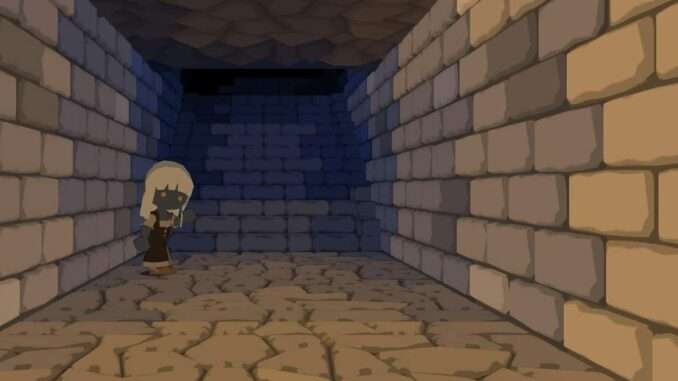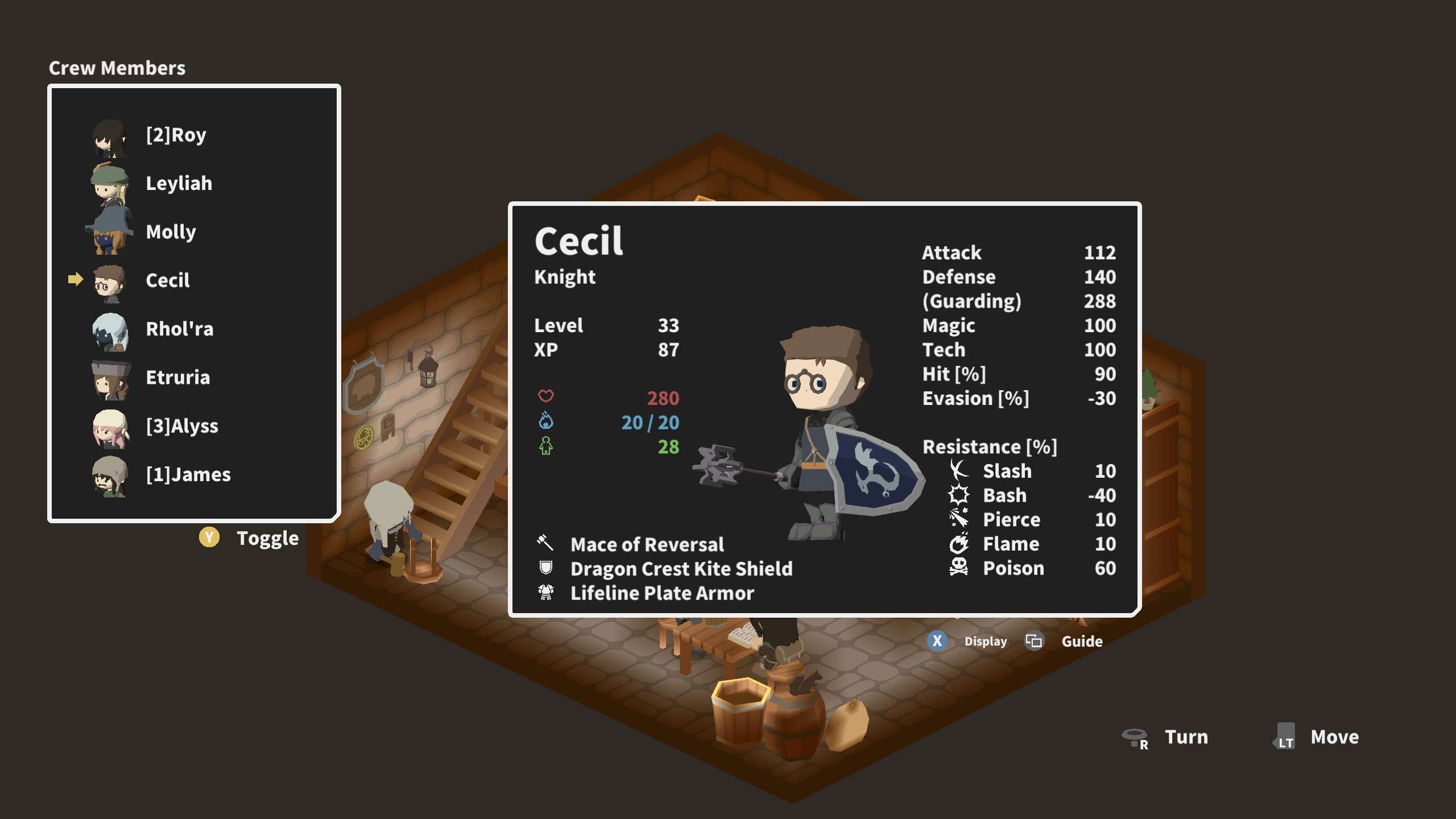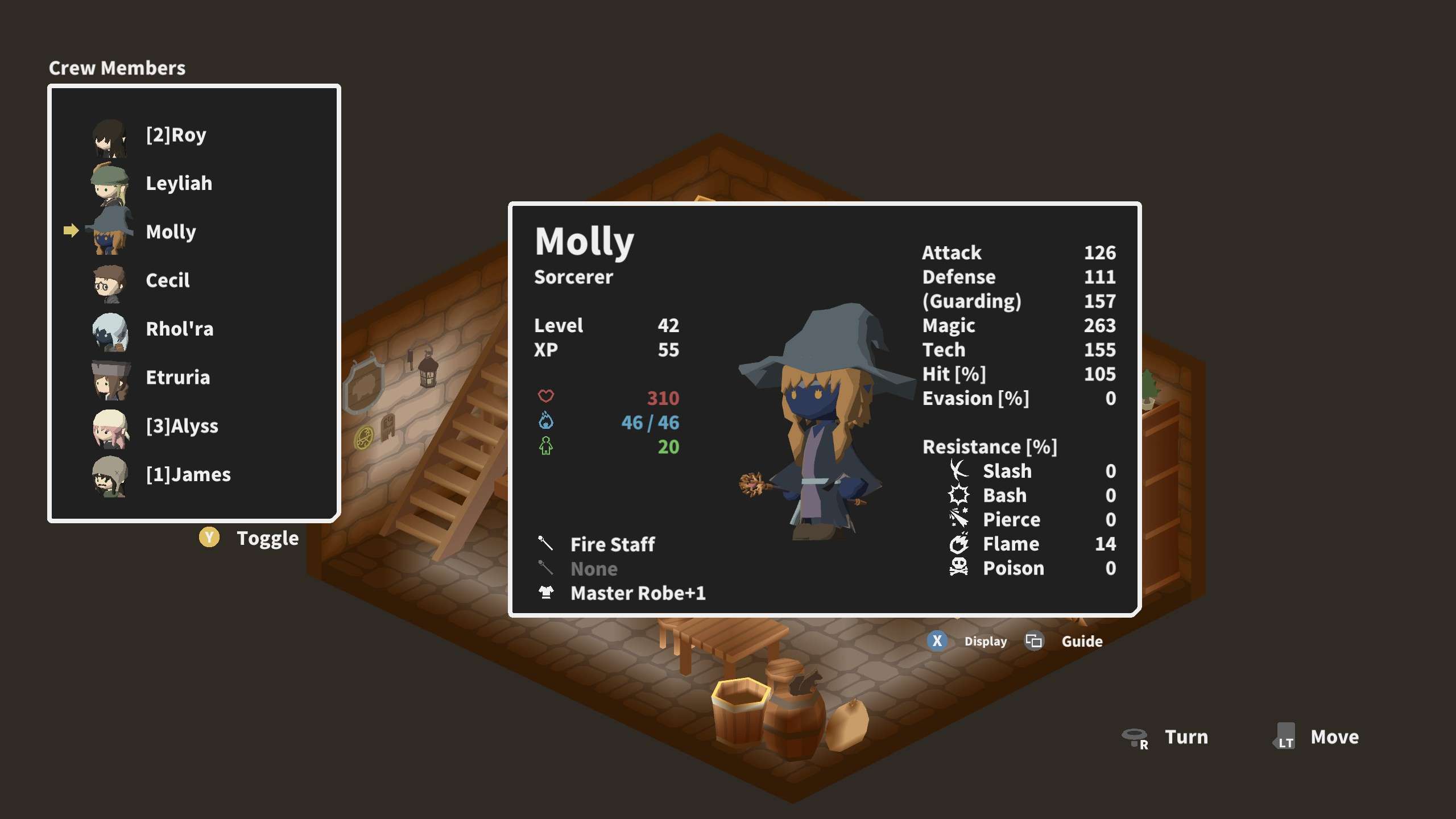
An overview of game systems, and basic ideas about team composition and strategy.
Guide for New Players
The Overview
Potato Flowers in Full Bloom is a dungeon crawler. After a brief tutorial section, you create a party of three custom characters with whichever classes you would like, and enter a labyrinth. Create characters you like, rather than characters you believe will be good: specific weapons and skill builds will allow you to find synergies in the abilities of your specific party setup and develop team strategies for different scenarios.
Grinding backup characters is extremely easy, which allows you to replace any member or fill any role with ease, so don’t second-guess your decisions too much. There is also a shrine in the first dungeon that allows you to respec, so don’t forget to return there as you discover new keys.

Hidden doors can be discovered by staring at a suspicious dead-end wall for five seconds. There is a lot of returning to home-base to restore this game’s MP equivalent, and although this can be annoying, you wind up memorising the layout of the dungeon. This is more necessary for some parties than others.
I have played through the game twice at time of writing. Over time, I found that I overvalued healing, and should have been braver about using my front and middle party members to try to interrupt enemy attacks, to kill them before they get their turn, instead of playing too defensively.

Here are some class composition tips from my two playthroughs:
My first team (“Party 1”) was Warrior, Shaman, Sorcerer
I used the stamina and HP regen abilities of the Shaman to sustain the party while the greatsword-wielding Warrior taunted and parried. The Sorcerer could then focus on setting up a large burst with a status-effect detonating move (single target) or multi-turn charged damage spell (multiple targets). The party was essentially defensive, and had few ways to control or interrupt the enemy except by hitting them to delay their attacks (the Shaman could interrupt with Leg Sweep, but that was about it). The AoE damage was just alright, but the roles were somewhat fixed because everything hinged on the Sorcerer’s successful 3-5 turn burst windup. Lack of access to bash damage was a massive downside; the Warrior lost his parry skills when holding a two-handed hammer for the undead sections, a definite fault in the party’s design.
My second party consisted of a Rogue, Knight, and Wizard
I felt Rogue had a much broader offensive kit than the Warrior, with a similar effectiveness of evasive ability, if built right – he could throw daggers at the backline for important targets (and thrust damage), apply several debuffs, soak enemies he couldn’t hurt in oil so the Wizard could do that damage with Fire instead, and even decrease enemy evasion with Net. This team also had superior access to damage types: usually the Rogue could slash and thrust, and the shield-equipped Knight could slash and (shield) bash if necessary, with the Wizard being able to assist regardless of the situation. The Wizard’s Freeze, Rock Crush (bash), Fire damage, and cheap Icicle spell for constant damage made for a character who could both control enemy turns and damage anything. The Knight also had Shield Charge to interrupt, making the second party overall one of versatility, self-sufficiency and turn/enemy control. I felt I benefited greatly from having a wide variety of damage types available in my party composition, but skilled players can beat the game with two members, or solo.

All in all, your party’s access to a wide toolkit will help you win. Though Party 2 had only one very weak healing source, there was maybe a single battle where I actually ran out of health because of the lack of healing abilities; you will know that you’ve lost the fight long before this, in most cases, and can flee to regroup. Managing the Knight and Rogue well meant the Knight would defend most damage and the Rogue would evade it.
Don’t be afraid to use your frontliner’s attacks to delay the enemy’s attack, so that your other members have time to attack and finish him instead of blocking his attack. Don’t be afraid to spend some health to eliminate an enemy out of the crowd – better to take a winning trade than to stall, block, and possibly get overwhelmed, which was the way that the slower, sustain-based Party 1 tended to lose. Both playstyles are viable, but the second was faster and more fun.


Be the first to comment